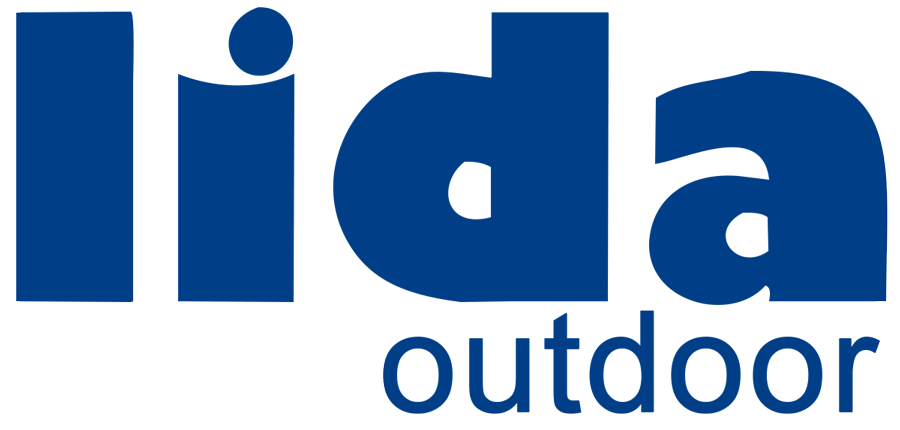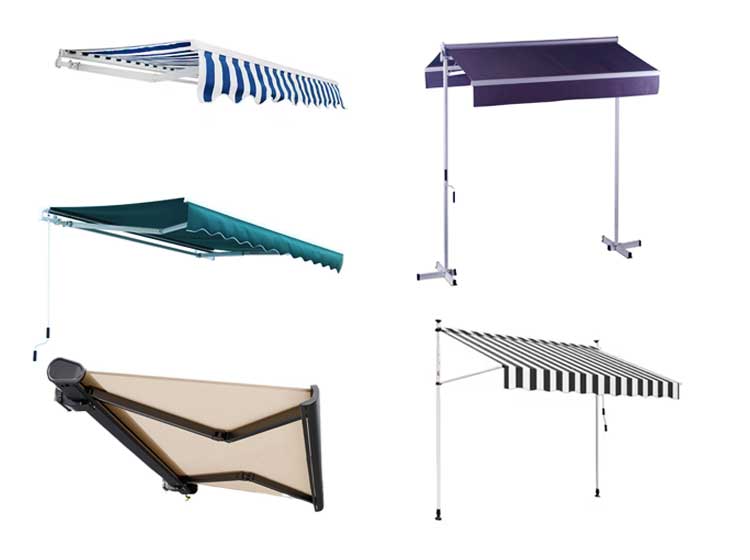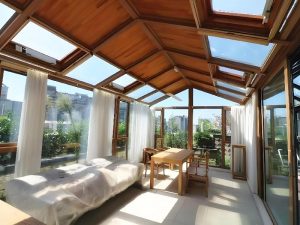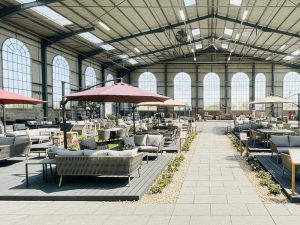From patio comfort in suburban homes to branding displays for downtown cafés, awnings play a crucial role in controlling sunlight, improving energy efficiency, protecting against weather elements, and even shaping customer experiences. In fact, in regions like North America and Western Europe, awnings are not just accessories—they’re often considered part of the functional architecture.
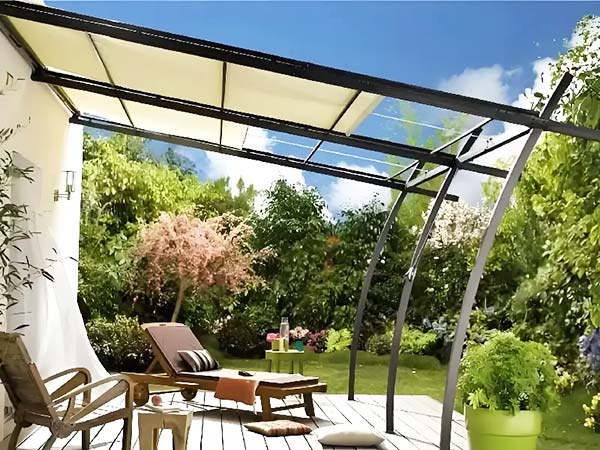
For retailers, brands, and project contractors, staying up-to-date with market trends and understanding the full spectrum of awning types—how they operate, where they’re used, and what materials they’re made of—is essential for providing informed recommendations, managing customer expectations, and optimizing procurement decisions. In this guide, LIDA OUTDOOR provides a comprehensive breakdown of 5 popular awning categories, including practical use cases, structural comparisons, and material insights, to help you make informed sourcing and selling decisions.
Part 1. Awnings by Structure & Operation
Understand the Backbone of Awning Design: How They Function, Mount, and Adapt.
Before diving into specific applications or materials of awnings, it’s essential to first understand how awnings are fundamentally built and operated. Whether fixed in place or designed to retract, the structure of an awning determines its durability, flexibility, installation needs, and cost. Below, we will introduce five key structural types and discuss the differences between motorized and manual operation.
1. Fixed Awnings
Fixed awnings are permanently installed structures designed to provide continuous protection from sun, rain, and wind. Unlike retractable models, they remain in place year-round and are ideal for locations that require long-term coverage, such as store entrances, windows, patios, and cafés. Fixed awnings can be custom-shaped (e.g., dome, arched, bullnose) and are often constructed from fabric, polycarbonate panels, or metal frames.
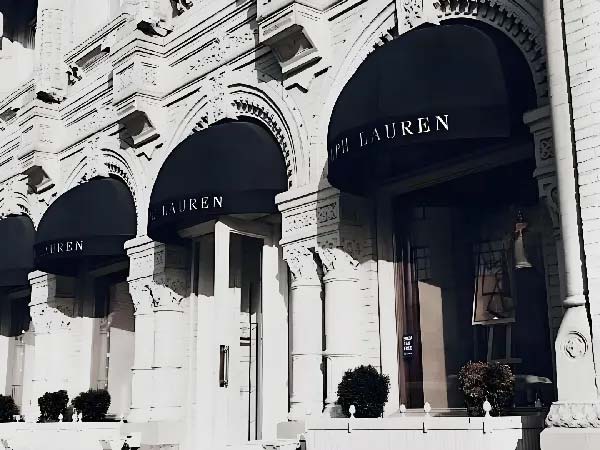
Their solid build makes them highly wind-resistant and low-maintenance. For commercial settings, fixed fabric awnings can also double as signage, with printed logos or promotional graphics that enhance brand visibility.
2. Retractable Awnings
Retractable awnings are known for their flexibility and user control. These awnings can be extended or retracted as needed, making them perfect for spaces where weather conditions vary or where users want the option of full sun exposure. Available in manual and motorized versions, retractable awnings come in open, semi-cassette, or full-cassette styles, depending on the level of protection needed for the fabric and components when retracted.
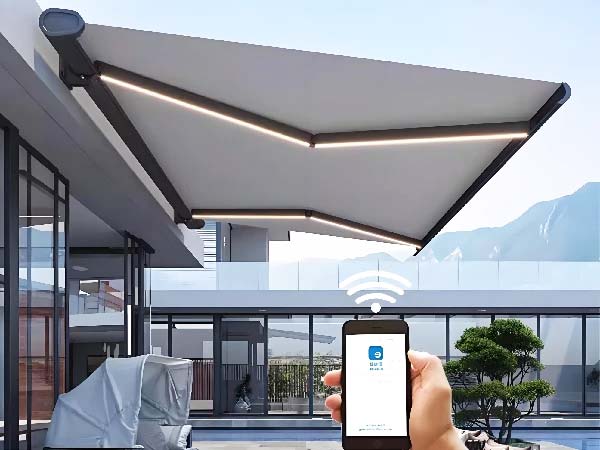
Their adjustable nature and sleek appearance make them especially popular for residential patios, restaurants, and boutique shops. However, they require more maintenance than fixed awnings and may have lower wind resistance depending on the design.
3. Freestanding Awnings
Freestanding awnings are standalone structures supported by their own frames, independent of walls or building facades. They are commonly used in open spaces such as pool areas, outdoor cafés, garden lounges, or event venues where no wall is available for mounting. Typically designed with a dual-post or multi-post system, freestanding awnings often feature retractable canopies and adjustable tilt angles.
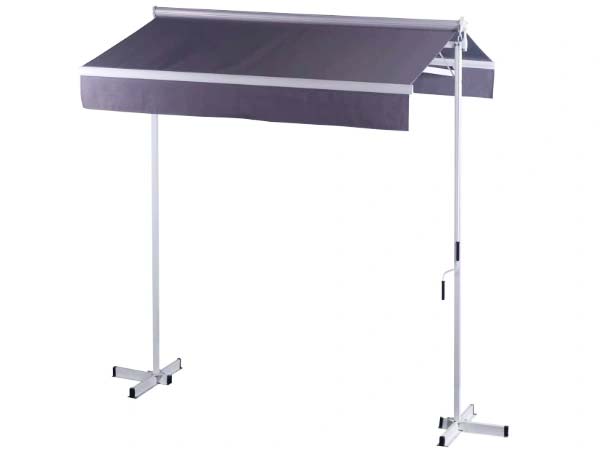
Modular combinations allow for extended coverage, making them suitable for both residential leisure and large-scale commercial installations. Their flexibility in placement and coverage makes them a preferred solution for a wide range of shading needs.
4. Side Awnings
Side awnings, also known as lateral or vertical screens, are designed to block low-angle sunlight, reduce wind intrusion, and provide privacy in outdoor areas. These awnings are installed perpendicular to the main shading direction and can be pulled out horizontally to provide additional shade. They are ideal for patios, balconies, poolside lounges, or café terraces where added protection from the side is needed.
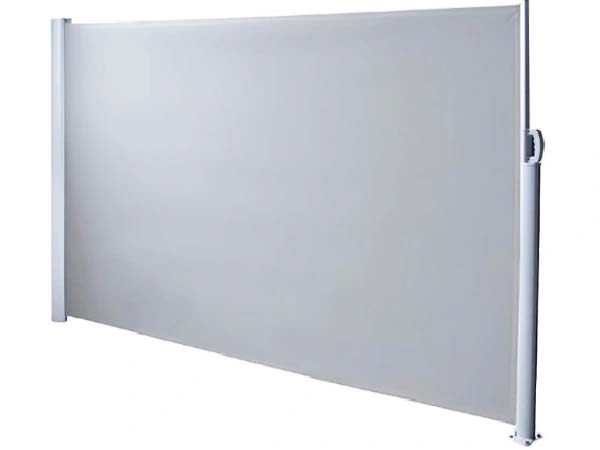
In commercial environments, side awnings also enhance user comfort by reducing visual distractions and creating semi-private zones. Many modern side awnings use cassette housings and durable fabrics that resist UV and wind.
5. Motorized vs. Manual Control
The method of operating an awning plays a crucial role in user convenience. Motorized awnings provide effortless operation through remote controls, wall switches, or smartphone apps, making them ideal for larger setups or those with accessibility needs. Some include wind sensors that automatically retract the awning during storms.
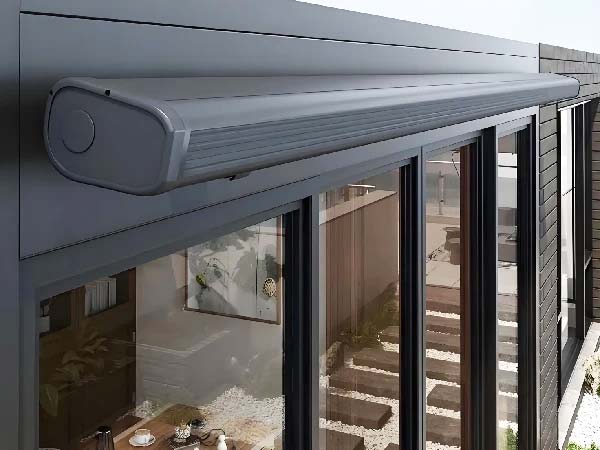
Manual awnings, on the other hand, use hand cranks or pull mechanisms and are cost-effective, lightweight, and ideal for smaller spaces or budget-conscious buyers. While motorized systems add sophistication and comfort, manual versions still remain popular due to their reliability and lower upfront cost.
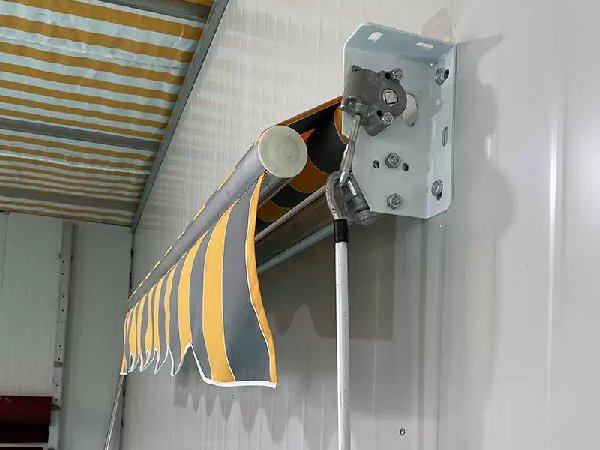
Part 2. Awnings by Application Scenario
Tailoring Shade to Space: Matching Awnings with Real-World Uses
While structure determines how an awning functions, application determines how it fits into everyday life. From backyard patios to rooftop bars, each space has unique requirements for shade, wind resistance, aesthetics, and privacy. In this section, we’ll explore common usage environments and recommend awning types that best match each one, so you can guide customers to smarter, space-specific choices.
1. Deck Awnings
As the name suggests, deck awnings are designed for terraces and decks, making them perfect for family gatherings and outdoor relaxation. Whether under the scorching summer sun or the gentle winter breeze, these awnings provide excellent coverage and a comfortable outdoor experience. Popular options for deck awnings include fixed, retractable, and motorized styles, which can be selected based on the deck’s layout.
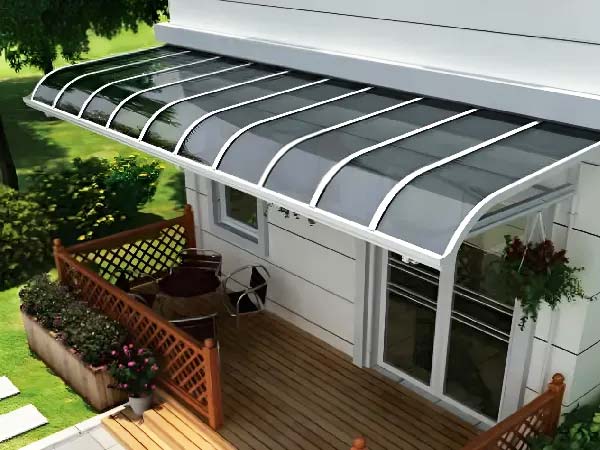
2. Patio Awnings
Patios, as home extensions, require functional shading solutions that blend well with outdoor furniture. Fixed, retractable, and motorized awnings are classic choices, catering to daily shading needs while adding a touch of elegance to the patio. For those prioritizing convenience and flexibility, freestanding awnings can also be a great option. To enhance side shading and privacy, side awnings can be paired with these solutions, increasing practicality and comfort.
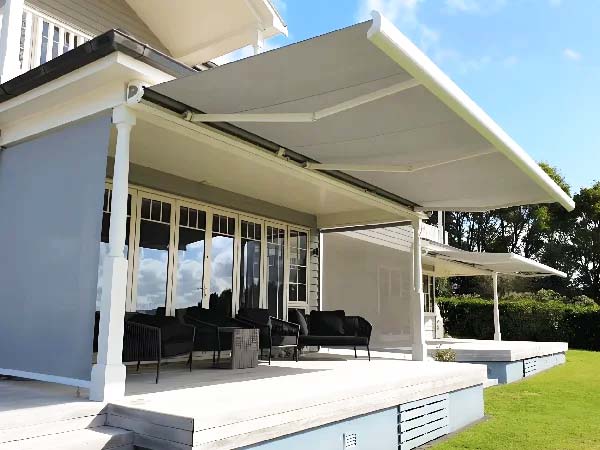
3. Pergola Awnings
Pergolas provide a natural frame for integrating shading systems. Pergola awnings are typically mounted over or within the frame and can be fixed or retractable depending on user preference. For higher-end outdoor areas, such as garden lounges or poolside pavilions, motorized retractable fabric awnings with side panels offer a luxurious and flexible solution. Materials such as PVC-coated polyester or waterproof canvas are commonly used to resist the sun and rain, while maintaining airflow and visibility.
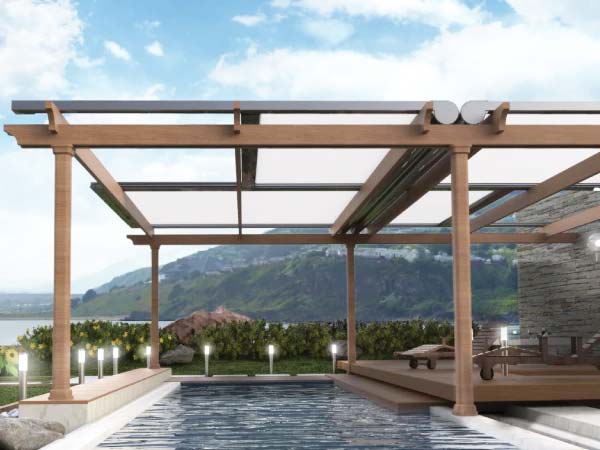
4. Window and Door Awnings
The shading needs for doors and windows are generally smaller, making fixed awnings the best choice. For residential users, polycarbonate fixed awnings are particularly popular. This material effectively blocks UV rays, is durable, and is affordable, making it a favorite among consumers. Whether used for door decoration or window shading, polycarbonate awnings deliver both functionality and aesthetic appeal.
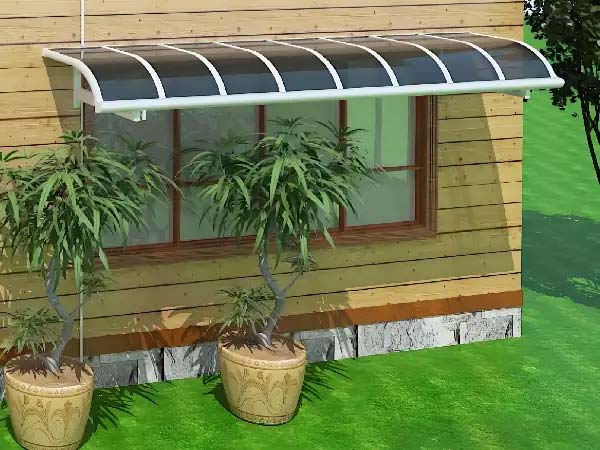
5. Commercial Awnings
Shops, restaurants, hotels, and event venues often rely on awnings to enhance their exterior presence while improving customer comfort and satisfaction. Fixed awnings with fabric branding are a classic choice for storefronts. In outdoor dining areas or bar terraces, side awnings provide wind and rain protection while increasing perceived privacy. Motorized retractable awnings are suitable for upscale environments where automation, aesthetics, and weather adaptability are valued. For commercial buyers, modular design and easy maintenance are key considerations.
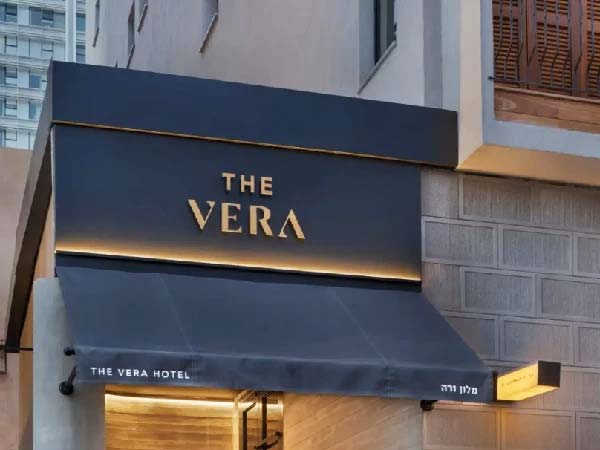
Part 3. Awning by Cassette Types
Understanding Awning Enclosures for Longevity and Weather Resistance
Beyond fabric and frames, the cassette design—or lack thereof—plays a big role in how well your awning holds up over time. A cassette refers to the outer casing that encloses the awning when it is retracted. It protects the fabric and moving parts from exposure to wind, rain, UV, and dust. Choosing between a full cassette, semi-cassette, or open style can impact the awning’s lifespan, maintenance needs, and overall performance, especially in harsh climates or commercial settings.
1. Full Cassette Awnings
Full cassette awnings offer the highest level of protection. When retracted, the fabric, arms, and all moving parts are fully enclosed in a sealed aluminum housing. This design keeps the internal components clean, dry, and shielded from UV radiation, extending both aesthetics and functionality.

Full cassette awnings are ideal for regions with high winds, frequent rainfall, or intense sunlight. They are also favored in high-end residential and commercial spaces where both durability and appearance are important. While they tend to cost more than open types, the maintenance savings and extended lifespan make the investment worthwhile.
2. Semi-Cassette Awnings
Semi-cassette awnings provide partial protection, typically enclosing the top and rear of the awning while leaving the arms partially exposed. This design strikes a balance between coverage and cost. It helps protect the fabric from rain and UV when retracted, while still allowing for a lighter and more affordable build. Semi-cassette models are popular in moderate climates and for users who want better protection than open types, without paying the premium for a full cassette. They are commonly used in residential patios or storefronts with some overhead coverage.
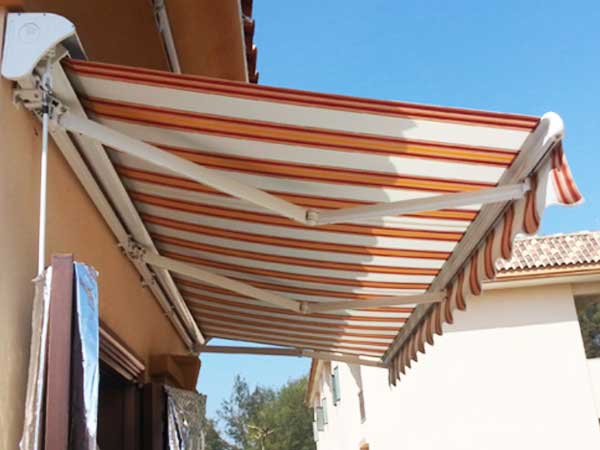
3. Open Awnings
Open awnings are the most basic type, with no cassette casing. When retracted, the fabric and components remain exposed. They are lightweight, easy to install, and usually the most budget-friendly. However, they require additional protection—such as being installed under a roof overhang or canopy—to prevent premature wear from the elements. Open awnings are best suited for covered patios, seasonal use, or indoor-facing balconies where exposure to weather is minimal.
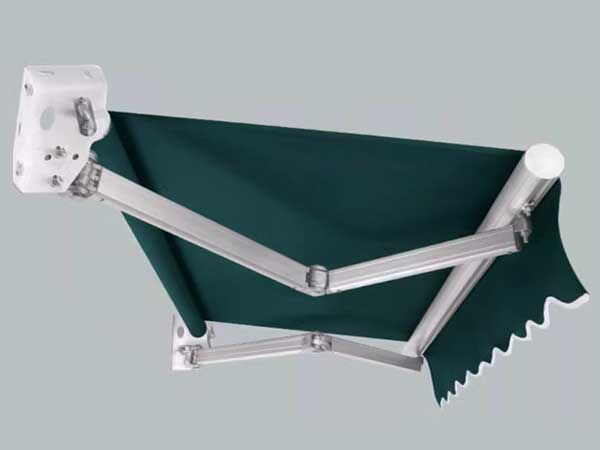
Note: When selecting an awning, cassette type should never be an afterthought. The right enclosure can dramatically reduce maintenance, preserve fabric quality, and extend product life, especially in outdoor commercial environments. Think of it as a shield: the harsher the conditions, the stronger the protection you’ll need.
Part 4. Awning by Materials
From Fabric to Frame: What Your Awning Is Made Of Matters
While the structure and mechanism of an awning determine how it functions, the materials used define what type of awning it truly is—in terms of durability, maintenance, climate suitability, and even style. From flexible fabrics to rigid panels, from lightweight aluminum frames to heavy-duty steel structures, every material introduces distinct advantages and limitations.
In this section, we categorize popular awning types based on canopy materials and frame composition, offering practical insights into how each performs and where it works best.
1. Polyester & PVC-Coated Awning
Polyester is one of the most common and cost-effective awning fabrics, known for its strength, mildew resistance, and low price point. When coated with PVC, it becomes waterproof and UV-resistant, making it a practical choice for year-round outdoor use. These awnings are also highly customizable—available in various colors, textures, and printable surfaces, making them ideal for commercial storefronts, cafés, and residential patios on a budget.
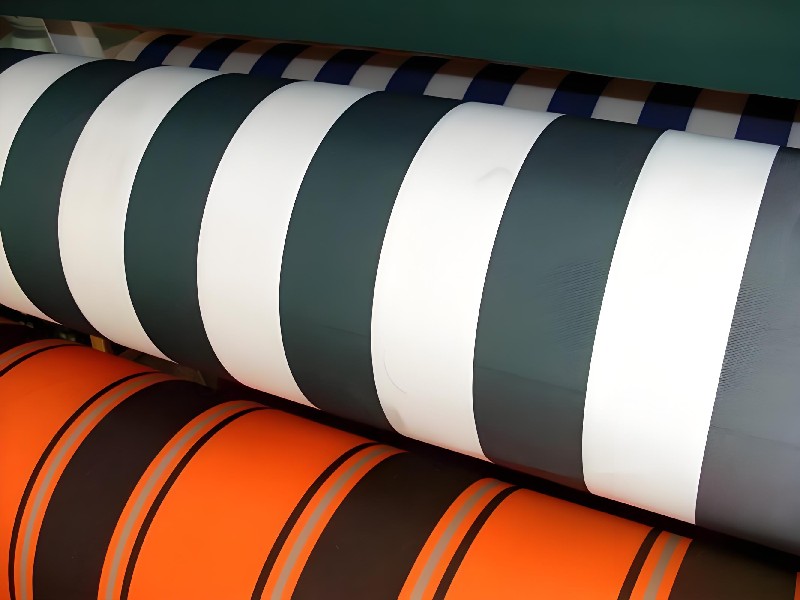
2. Acrylic Fabric Awning
Acrylic canvas, often solution-dyed, offers superior UV resistance, breathability, and long-lasting color. Unlike surface-dyed polyester, acrylic fibers hold their color even after years of sun exposure. These acrylic awnings present a more upscale look and are commonly seen in residential balconies, boutique hotels, and design-conscious commercial facades. They may require occasional waterproof recoating.
3. Membrane / Tension Fabrics Awning
Membrane structures use high-performance fabrics like PTFE or PVC-coated fiberglass to cover large spans with minimal structural weight. They’re engineered for maximum durability, thermal control, and self-cleaning, and are ideal for stadiums, atriums, public plazas, and iconic commercial spaces. Their tensioned design allows them to resist high winds and shed rain efficiently.
4. Polycarbonate (PC) Sheets Awning
Polycarbonate (PC) sheets are transparent or tinted panels known for impact resistance and moderate UV protection. Therefore, polycarbonate awnings are ideal for window and door awnings where visibility, affordability, and basic weather protection are needed. However, PC materials tend to degrade under strong UV after 8–10 years, requiring timely replacement in high-sun regions.

5. Aluminum Composite Panels (ACP) Awning
ACP consists of a polyethylene or PVC core between two thin aluminum layers. It’s rigid, weather-resistant, and thermally insulating, making it ideal for commercial applications requiring both aesthetics and protection. These panels offer 100% shade, are available in various finishes, and support branding graphics. Commonly used in awning housings or fixed rooftop covers.
6. Aluminum Frame Awning
Aluminum frames dominate the modern awning industry thanks to their light weight, anti-rust properties, and design flexibility. They’re perfect for retractable systems, balcony installations, and humid coastal zones. While less sturdy than steel under extreme load, aluminum is sufficient for most residential and mid-size commercial setups.
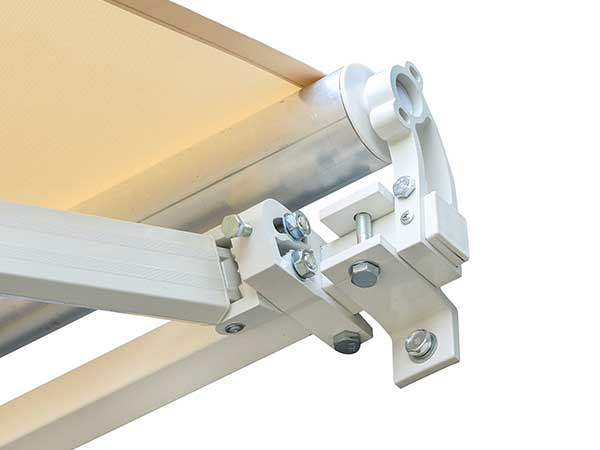
7. Steel Frame Awning
Steel frame awnings are built for strength, durability, and long-term structural integrity. While heavier than aluminum, steel options offer superior load-bearing capacity and are ideal for large installations or areas with high wind exposure. Depending on the project budget and environmental exposure, there are three primary types of steel commonly used in awning frames:
-
Galvanized Steel: A cost-effective choice with high structural strength, often used in large or permanent installations. However, it requires protective coatings to prevent rust over time.
-
Stainless Steel: Offers superior corrosion resistance and a clean, modern appearance. Often seen in high-end commercial or residential projects, but comes at a higher material cost.
-
Forged Steel (Hot-Dip Galvanized): Designed for extreme durability, this type is preferred in heavy-duty applications or in areas with strong winds, storms, or coastal humidity.
Whether you’re sourcing an industrial awning or a long-span architectural shade, steel-framed systems deliver unmatched strength and reliability—just be sure to account for the weight and rust-proofing requirements.
5 Key Factors to Consider When Choosing An Awning
Choosing the right awning isn’t just about structure or material—it’s about aligning the product with the real-life context of use. Whether you’re advising a homeowner, designing a hospitality space, or managing a commercial procurement project, there are five key factors you may consider.
1. Weather Conditions & Environmental Exposure
Different environments demand different performance. Coastal areas require corrosion-resistant frames like aluminum or stainless steel; regions with heavy rainfall need waterproof fabrics such as PVC-coated polyester; high-UV zones benefit from fade-resistant acrylic or membrane fabrics. Wind-prone locations should use retractable awnings with wind sensors or opt for fixed steel-frame designs.
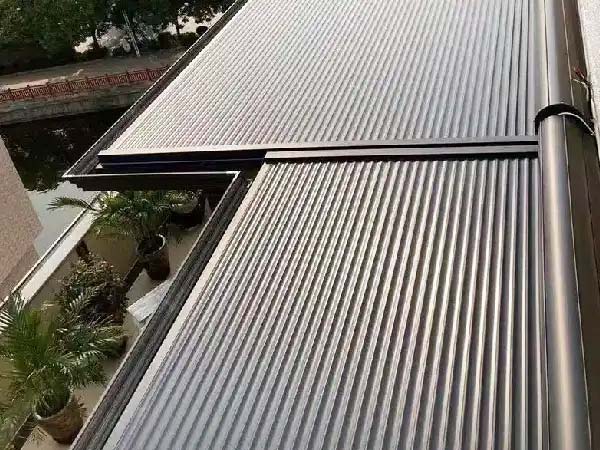
2. Space & Structural Constraints
Not every space is ready for every awning. Balcony railings, ceiling height, wall material, and clearance zones (e.g. windows or doors) all influence the type of awning that can be installed. Freestanding awnings solve placement limitations, while cassette types help conserve space and reduce visual clutter.
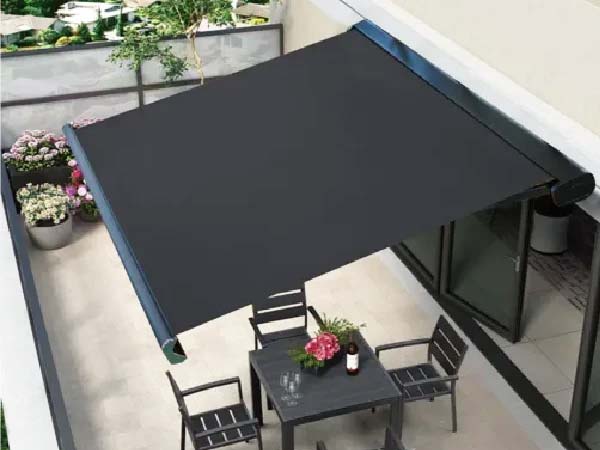
3. Aesthetic Compatibility & Brand Integration
The right awning should complement the building’s style—whether it’s minimal, rustic, or modern. For commercial projects, color schemes, fabric textures, and branding (such as printed logos or signage) play a role in customer perception. ACP and fabric awnings offer branding flexibility, while membrane and polycarbonate options provide architectural flair.
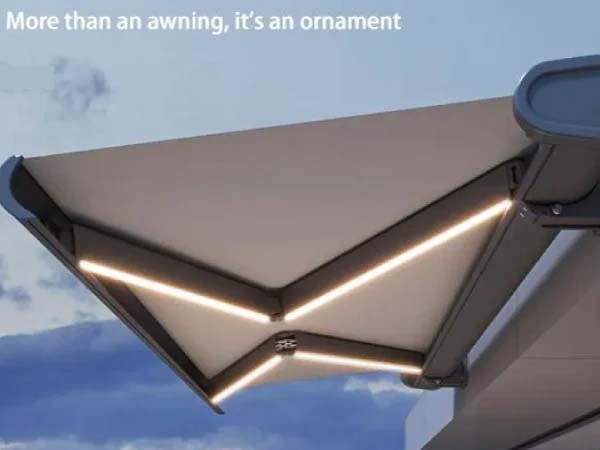
4. Budget & Lifecycle Value
Initial cost matters, but so does longevity. A low-cost polyester awning may require replacement in 4–5 years, while a higher-priced acrylic or membrane system may last 10–20 years with less maintenance. Consider cleaning effort, replacement frequency, and warranty coverage when calculating ROI.
Conclusion
From fixed frames to motorized systems, from fabric textures to steel reinforcement, every type of awning serves a different purpose. But the best choice isn’t simply about features—it’s about fit: fit for the space, the weather, the lifestyle, and the brand identity.
As outdoor spaces continue to evolve from functional zones into experience-driven environments, awnings play a unique dual role: they offer shelter and shape perception. By understanding how different materials, mechanisms, and formats perform across conditions, you’ll be better equipped to guide your clients—or your own projects—toward solutions that are both beautiful and built to last.
If you are looking for outdoor patio awning manufacturers from China, LIDA OUTDOOR is your ideal choice. We provide high-quality and affordable awning products suitable for the U.S. and European markets and support OEM and ODM services. Feel free to reach out for inquiries!
